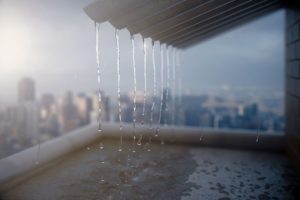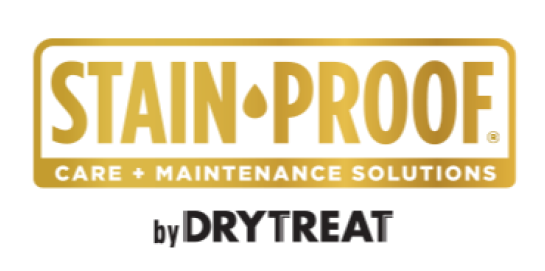ASTM Testing’s mission is to evaluate – through waterproofing standards testing – products used to waterproof materials, surfaces and building systems. Tests even concern the “green” aspect of the chemicals comprising the coating. These tests include how best to apply a coating and with what tools. Nonetheless, it is the hydrostatic movement of water from the earth to the surface or even rain on a roof or patio that best exemplify the challenges to waterproofing’s integrity and effectiveness. The focus of these waterproofing standards concentrates on the penetration of moisture or water through a treated surface or membrane.
Water tight describes the performance standard for waterproof coatings.
If the waterproofing cannot stem hydrostatic movement of water or water’s migration, then it will fail the test. The inability by a coating to resist chemicals that can harm the membrane and blunt root growth will also fail. Yet, a waterproofing system changes depending on the surface and more. In turn, that affects the test type. The ASTM has performed many waterproofing standards testing on waterproofing products but does not do field testing which leaves environmental factors and daily usage issues sidelined.
It is the outcome over time that determines whether a waterproof coating passes the American Society for Testing Materials (ASTM) test. For example, the expectation, despite warranty standards, is that the waterproofing (membranes) should maintain its integrity for the surface’s – a building component or structure – life.
For flooring applications, the ASTM uses standard changes and the warranty typical to the industry. Again, the waterproofing standards testing does not apply to the chemicals used or their compounds, but to the result. Screening for chemicals and their compounds for a “green” analysis take place, but no further qualitative evaluations occur. The test underscores the public’s interest in health for both themselves and the environment. The test does not highlight which chemical is better than another.
ASTM’s lab testing has a stellar reputation.
 Since experimental testing is confined to a lab, most of the recommendations that arise from test results contain a caveat to that effect. ASTM’s lab testing has a stellar reputation. Waterproof products receive evaluation through methods that copy their application to a surface. Patios, kitchen floors, and wooden decks are not constructed or brought into the labs. The materials from these systems undergo the testing to see if they remain water tight or resistant when exposed to moisture, hydration, and water migration. The results are then published.
Since experimental testing is confined to a lab, most of the recommendations that arise from test results contain a caveat to that effect. ASTM’s lab testing has a stellar reputation. Waterproof products receive evaluation through methods that copy their application to a surface. Patios, kitchen floors, and wooden decks are not constructed or brought into the labs. The materials from these systems undergo the testing to see if they remain water tight or resistant when exposed to moisture, hydration, and water migration. The results are then published.
Since the ASTM is such a respected organization, its recommendations and evaluations can have a powerful effect. Companies advertise that their products meet ASTM standards as a means of showing that they remain competitive on a technological level. This is also a means to display their concern and involvement in protecting the community. It is a seal of approval that helps market the product.
To look, however, to the ASTM to provide insight into the actual nature or effect of individual chemicals that comprise waterproof coatings goes beyond their mission. Their waterproofing standards testing embraces and outcome determinative test for waterproofing coatings, excluding determining the “green” level of a product.
The limitation on waterproofing standards testing limits the trust placed on ASTM’s evaluation.
Snowy conditions versus the jungle humidity have their effect on waterproofing products. Cold climates versus warm climates also have their effect. A surface that receives a daily abundance of foot traffic versus a patio’s surface that only enjoys use during summer will also yield different results over time.
Understanding what a test does and what it tries to accomplish proves key to what it is evaluating. Simply taking a result and using it to suggest that it claims something that it doesn’t prove inadvisable. Products often work better in different environments. Also, one product may perform better in one set of conditions than another. This makes it difficult to conclude that a product may improve after testing.
A bad waterproofing standards testing result usually evokes an immediate response. As indicated, companies want ASTM’s approval for the products they use. Compliance to meet that minimum standard will hopefully work to excite companies to improve their products to meet that standard.
Contact us, Pli-Dek Systems, to learn more about the many ASTM tests that we have gone through and passed, as well as to learn more about flooring systems, materials, and waterproof coatings.











